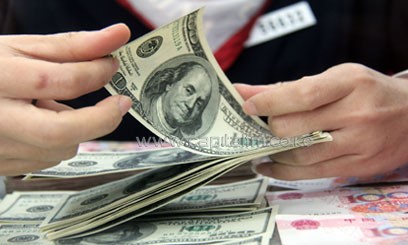Paris, France, July 16 – Faced with the highest inflation in four decades, central banks in the United States, eurozone, and UK are hiking interest rates in order to contain inflation.
The reversal in monetary policy will have a tangible impact on the real economy for consumers as well as businesses in these countries, and elsewhere including countries with economies in much more fragile conditions.
The US Federal Reserve announced the most aggressive interest rate increase in nearly 30 years, raising the benchmark borrowing rate by 0.75 percentage points on Wednesday.
And the Bank of England was expected on Thursday to raise its key interest rate for a fifth straight time.
– Higher borrowing costs –
Higher central bank interest rates affect the cost of borrowing for banks, which then pass those costs onto businesses, consumers, and even governments.
That means higher borrowing costs, such as for buying a house.
“Mortgage rates are already rising, and that is likely to accelerate,” said Eric Dor, head of economic studies at France’s IESEG School of Management.
Higher borrowing costs eventually slow borrowing and thus economic activity. This should eventually slow inflation, which is the objective of central banks in raising interest rates.
Those who have to borrow face higher costs, but those with fixed rates on long-term loans (as is the case for mortgage loans in many countries) stand to benefit as the value of the repayments has diminished in real terms.
– Savers celebrate –
Those who have savings also stand to gain from rising interest rates. However most savings rates still propose rates considerably lower than the inflation rate.
– Currency values and trade –
Higher rates are affecting the value of currencies.
The dollar has been gaining in value against the euro as the US Federal Reserve has already begun raising interest rates, while the European Central Bank will only begin doing so in July.
The strong dollar will make imports cheaper for US consumers, but will likely hurt US exports which will be more expensive for foreign buyers. This could dampen employment.
Its the inverse for the eurozone and Britain, who have seen the value of their currencies weaken against the dollar. Imports are more expensive, especially oil priced in dollars. Exports are boosted as they are cheaper in dollars. A boom in exports could help support employment.
– Emerging problems –
US interest rates also affect borrowing rates for many emerging market countries who borrow on international markets.
Lenders demand higher returns than those they can receive from safer investments in the United States.
This can quickly crimp many emerging market governments, which are already facing stiff increases in energy and food import costs thanks to the pandemic and Ukraine war.
They can see the amount of lending available to them shrink as investors choose to park their money in US investments.
“For countries already in difficulty, like Turkey and Brazil and even more Argentina or Sri Lanka, this is very unwelcome as it raises the price of everything and causes a flow of capital towards the United States in particular” which makes financing their debt and economic activity more difficult and expensive, said Dor.
Market disruptions and economic crises cannot be excluded.



































